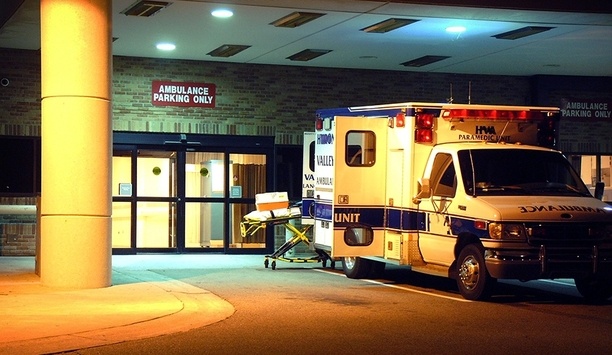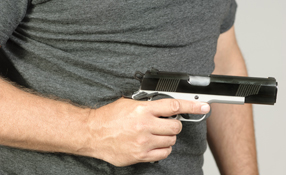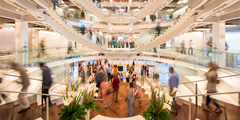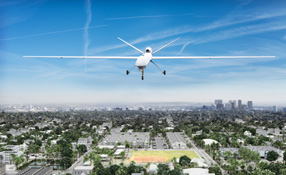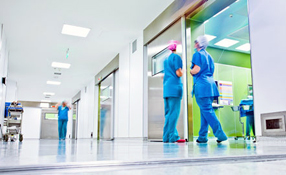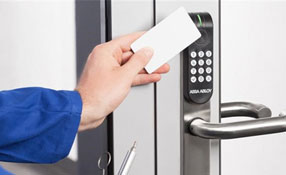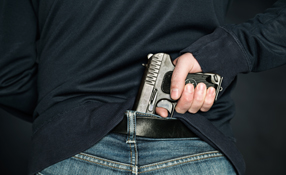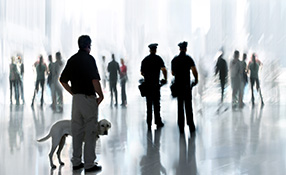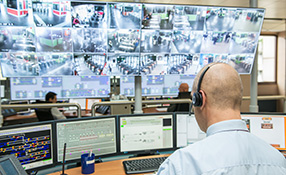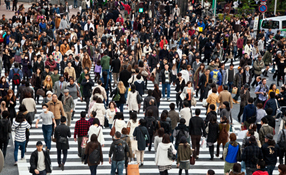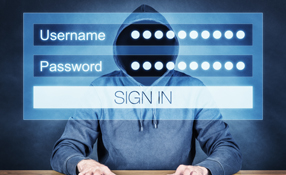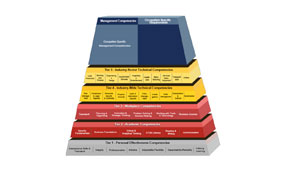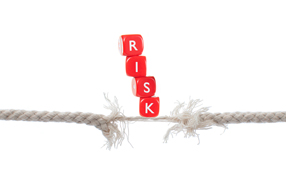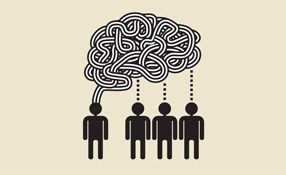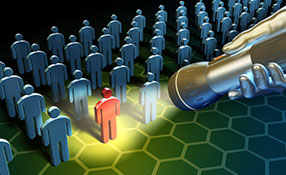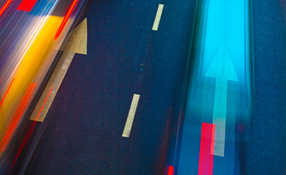 |
| Security cameras can earn a return on investment (ROI) that goes beyond security |
Today’s security camera technology can help speed entrance screening and provide video under very low light conditions. In each case, security cameras can earn a return on investment (ROI) that goes beyond security.
One difference between today’s security cameras and older generations of camera technology is something called wide dynamic range or WDR. It is a feature that enables a camera to produce detailed video images under a wide range of lighting conditions.
Conventional cameras produce good video in well-lighted areas. In poorly lighted areas, they produce dark images that are difficult to make out. Cameras with WDR can produce detailed images of objects and faces in bright light as well as low light.
WDR Security Applications
By resolving facial details clearly, WDR cameras can help with entrance screening.
Organizations that employ a lot of contractors — state and university campuses, for instance — can develop long lines at entrance-screening desks. If 20 contractors arrive at the front entrance to go to work at 9 a.m., it could take an hour or more to get them all inside using pen and paper.
“Well placed cameras and an automated visitor management system can help speed the throughput of people and vehicles into and out of facilities,” says Steve Surfaro, industry liaison with Lund, Sweden-based Axis Communications and chairman of the Security Applied Sciences Council for ASIS International.
“An established means of gaining entry is to present a driver’s license,” continues Surfaro, “which security needs to verify by checking the photo against the individual’s face. Today’s cameras, usually at the front entrance, use wide dynamic range to record detailed facial features.
"Well placed cameras and an automated visitor management system can help speed the throughput of people and vehicles into and out of facilities" |
“Once the face is recorded, the system will check it against faces previously enrolled in the system. When the individual presents a trusted document — probably a driver’s license — the security officer compares it with the person that is known and in the system. This way you can tell if this is a fake ID. If the person is new to the facility, the officer can enroll him or her.”
Today’s license plate capture systems can speed visitor check-in even faster. License capture cameras placed at the entrance to the facility or parking lot can read license plates and check them with the National Crime Information Center, which receives reports of stolen vehicles from police across the country, says Surfaro.
By the time the driver reaches the access-control desk, a security officer can have the visitor’s badges for those already in the system printed up and ready.
Seeing In The Dark
Today’s cameras can also see in very low light conditions, which can boost security while helping maintenance to work more efficiency.
“These ultra low light cameras find existing light and resolve images,” Surfaro says. “That makes it possible to see and respond to trouble hidden by darkness. Urban Institute research shows that if you respond to trouble as it happens, bad actors will know that someone is watching.”
Of course, it also helps security officers to see and understand how they should respond to problems. Security officers, of course, can handle most problems. But the cameras can also identify dangerous situations that require a police response.
"Today’s camera technology has made them even more valuable to security — and also capable of producing a return on investment" |
How Does That Help Maintenance?
There are sustainable, green policies and regulations requiring facilities to turn off the lights in boiler rooms, mechanical rooms, elevator machine rooms, telecom rooms — rooms where people generally don’t go — until there is a maintenance problem.
“Up until now, it hasn’t been worth putting cameras in these rooms and areas — because the cameras wouldn’t see anything,” Surfaro said. “Ultra-low light cameras can see. So now, the maintenance crew can see what has happened in these areas and take the right tools and parts on the first trip.”
Cameras have always been valuable security tools. Today’s camera technology has made them even more valuable to security — and also capable of producing a return on investment.




